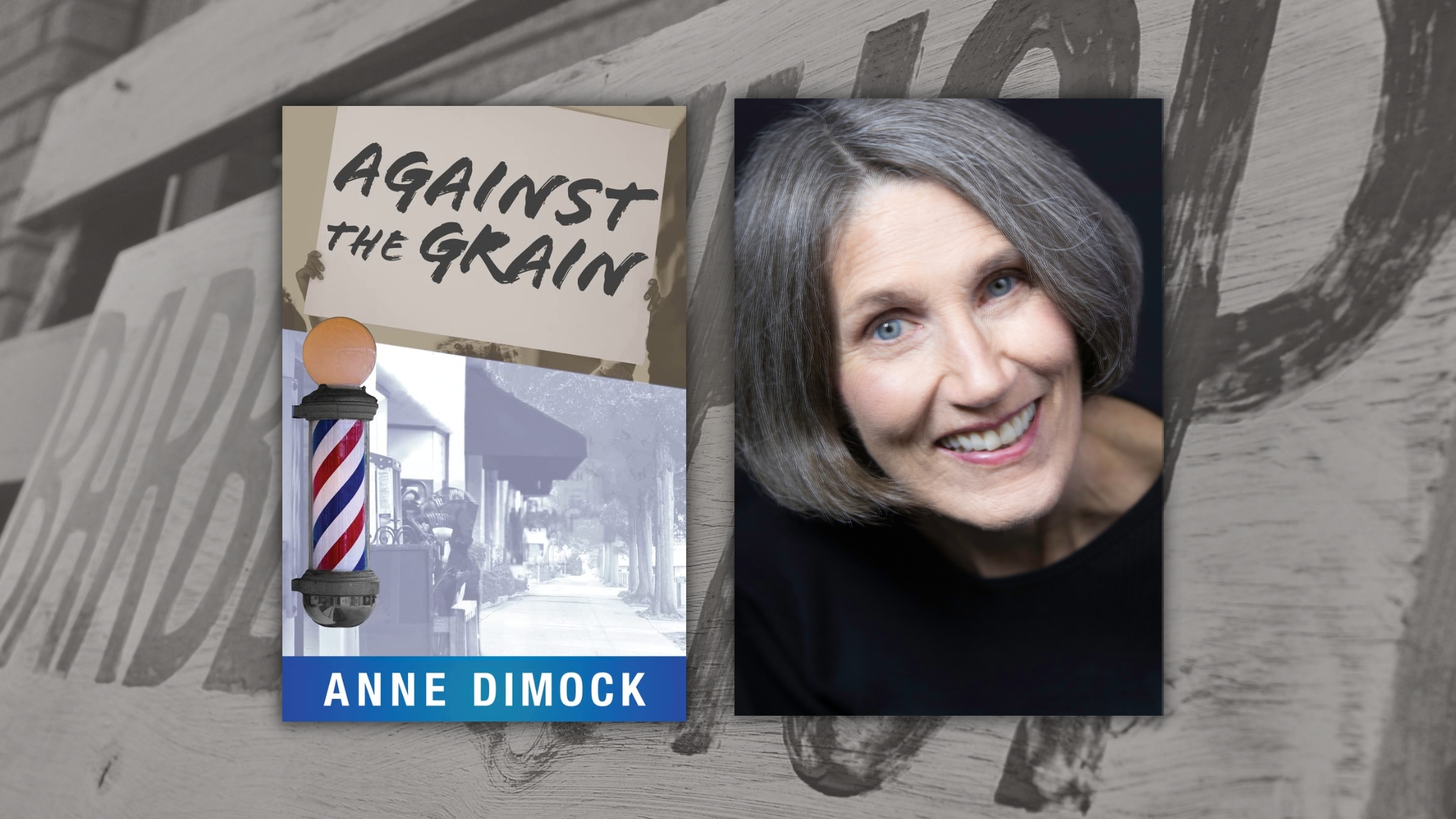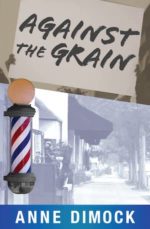
Against the Grain
Racism and desegregation. Catholicism and Vatican II. The Civil Rights movement. The limited lives of women. My high school’s tracking curricula. Sex and boys.
You can’t say Anne Dimock dodges the issues in her debut novel Against the Grain. If anything, she addresses them head-on.
“These were honestly issues that preoccupied my teenage mind, but I didn’t find any pathway for a discussion about them,” Dimock said in a recent interview.
The girl is Fleur Williams, an African American high school junior stuck in the indifferent machinery of the school’s tracking curriculum. Curious, observant, and mostly ignored, she yearns to escape her isolation and become somebody. The time is 1962 – 1964, when the United States is in the throes of desegregation. The drama is in the South but soon the North joins in.
There’s an oversight in the high school’s guidance office, and because they can’t think of anything else to teach her, Fleur is offered an after-school job. She will be the “new girl” in an upscale jewelry and gift store on the town’s Main Street. But will she be allowed to enter the rarified world of gold and silver, china and crystal, diamonds and pearls? Or will she just clean and wrap the merchandise?
Dimock delved further into the background of her work, and the potential controversy that she worked hard to address responsibly.
Q: Where did the idea for Against the Grain come from?
A: I worked in a similar jewelry store as my after-school job in high school. It was a beautiful setting and a very formative experience. The people were wonderful, the work hard, and I learned so much about life and my own capabilities. It was a positive and important period in my life and I wanted to give that experience to someone else. I also wanted to explore how that experience could tell a larger story of racism, one with a historical basis, but also still happening now.
Q: You address some heavy themes in the book. Tell us about them.
A: It’s quite a collection of themes where America was clearly falling short. Racism and desegregation. Catholicism and Vatican II. The Civil Rights movement. The limited lives of women. My high school’s tracking curricula. Sex and boys. These were honestly issues that preoccupied my teenage mind, but I didn’t find any pathway for a discussion about them. Even as a kid, I found it appalling that the grownups wouldn’t answer my questions about the barbershop protests in our town, even as they appeared on the front page of the Metro section of the New York Times.
Q: The story takes place in a small suburban neighborhood. Was this setting similar to your own background, and did the types of issues tackled in the book take place when you were growing up?
A: It is very similar to my own background, but I set the time period a little ahead of my own age. Barbershop protests did happen in my town and it was very divisive. Racial, class, and religious divisions existed too, though they were considered normal and acceptable for the time. One that bothered me a great deal as a teen was the way high school kids were “tracked” into college prep, secretarial, or mechanical arts. Those paths were determined more by class and race than interest or ability.
Q: Tell us about your decision to go with six separate “narrators” telling the story.
A: I originally made Fleur Williams, a Black teenager, my focus for telling this story. I received both criticism and encouragement for doing so. It forced me to re-examine if, how, and why white authors could write about Black characters. I also wanted to show some of the other forces at work in the town, represented by other narrators. Fleur’s new job, the barber shop protests and Fleur’s own protest provoked dramatic responses from others. That was part of the story I wanted to tell, so I included five other points of view.
Q: What kind of research did you conduct in putting this story together?
A: I wrote this book sporadically over a 15-year period, then focused on it during the pandemic. I did research at every stage of it, to confirm what I remember about that era, and to learn more. I visited my hometown library to review their collection of clippings from the barbershop protests. I reviewed timelines of important civil rights events nationally. I also wrote lengthy biographies of each character and did a lot of research for those. Most of my research doesn’t overtly appear on the page, but it’s there in the background.
Q: What was the most difficult part of the book to write?
A: I had to “kill my darlings.” I wrote multiple drafts, and elaborate back stories. I had originally wanted to make it Fleur Williams’ (the teenager) point of view. But I had also created another dozen or so characters with their story lines I was very attached to. And I wanted to show the life of the town and the era of gracious living and casual racism. Something was going to have to go. I cut, cut, cut and shaped what I had left around Fleur’s journey and the barbershop protests. And then I cut some more.
Q: What do you hope readers will take away from your book?
- History is all around us, as is our own participation in it.
- You are never too young or old to make a bold move to claim an important part of your life.
- The northern United States had its own history of racial struggles and an active Civil Rights movement.
- The loathsome effects of slavery, segregation, and tracking have left long trails of injustice and privilege.
- Local libraries and historical societies save the stories of ourselves. We should be more curious about them.

Publish Date: November 8, 2022
Page Count: 310 pages
Publisher: Woodhall Press
ISBN: 1954907028
